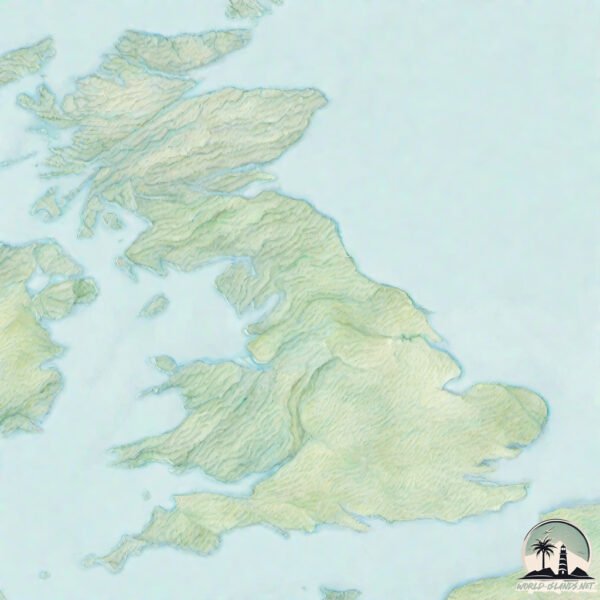Great Britain is a Colossal Island spanning 218634 km² with a coastline of 12126 km.
Topography and nature of Great Britain
Timezone: UTC±00:00Timezone places: Europe/LondonMax. Elevation: 1248 m Mean Elevation: 170 mVegetation: Cultivated LandTree Coverage: 19%
The mean elevation is 170 m. The highest elevation on the island reaches approximately 1248 meters above sea level. The island is characterized by Plateau: Elevated flatlands rising sharply above the surrounding area, with a maximum elevation over 500 meters but a mean elevation less than 300 meters, forming unique highland areas on islands.
Dominating Vegetation: Cultivated Land
Vegetation: 15 vegetation zones – Exceptionally Diverse Island
Infrastructure and Travelling to Great Britain
Does the island have a public airport? yes .
Does the island have a major port? yes .
The mean population of Great Britain is 292 per km². Great Britain is Moderately Inhabited. The island belongs to United Kingdom .
The name of the island resonates across different cultures and languages. Here is how it is known around the world: Arabic: بريطانيا العظمى; German: Großbritannien; Spanish: Gran Bretaña; French: Grande-Bretagne; Portuguese: Grã-Bretanha; Russian: Великобритания; Chinese: 大不列顛島
Continuing your journey, Walney Island is the next notable island, situated merely km away.
The Difference between Great Britain
What's the Difference Between Great Britain, the United Kingdom, and England? Clear up the confusion between Great ...
The Difference between Great Britain
the UK and England
What's the Difference Between Great Britain, the United Kingdom, and ...
What's the Difference Between Great Britain, the United Kingdom, and England? Clear up the confusion between Great ...
the British Isles: discover culture & geography!
Unlock the mysteries of the British Isles with our comprehensive ...
Unlock the mysteries of the British Isles with our comprehensive guide! Discover the distinctions between the UK, Great Britain, ...
The Difference between the UK, Great Britain & England Explained
New to the channel? Start here: ...
United Kingdom is classified as Developed region: G7: Group of Seven – Major advanced economies, including Canada, France, Germany, Italy, Japan, the United Kingdom, and the United States. The level of income is High income: OECD.
News – Latest Updates and Headlines from Great Britain
Stay informed with the most recent news and important headlines from Great Britain. Here’s a roundup of the latest developments.
Loading...
Social Media Posts about Great Britain
Loading...
Please note: The data used here has been primarily extracted from satellite readings. Deviations from exact values may occur, particularly regarding the height of elevations and population density. Land area and coastline measurements refer to average values at mean high tide.

